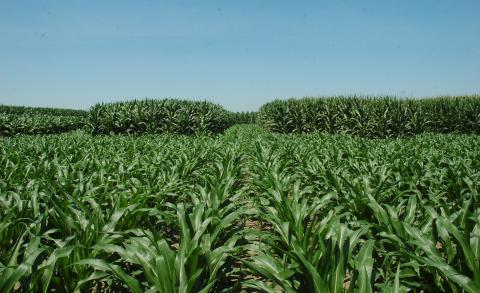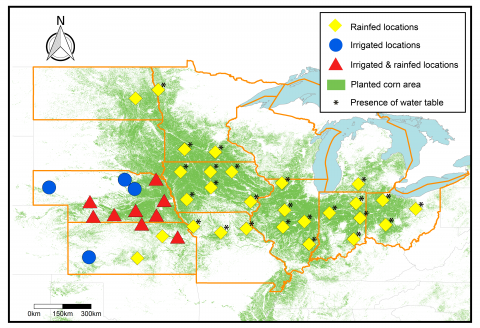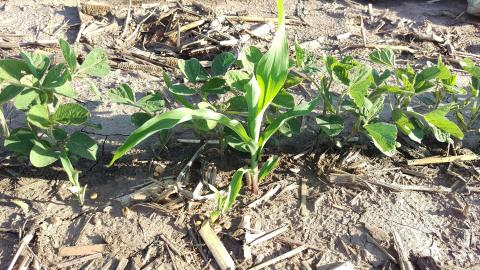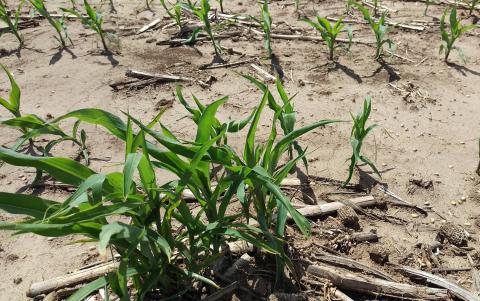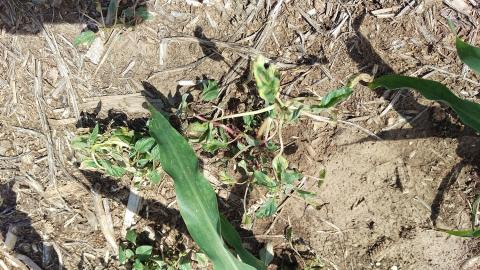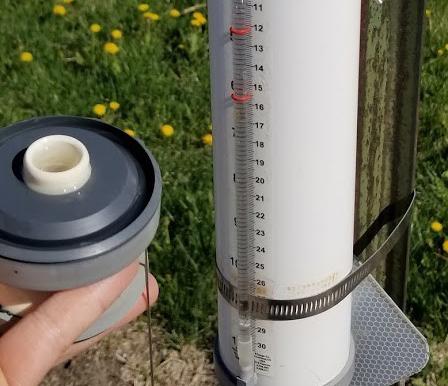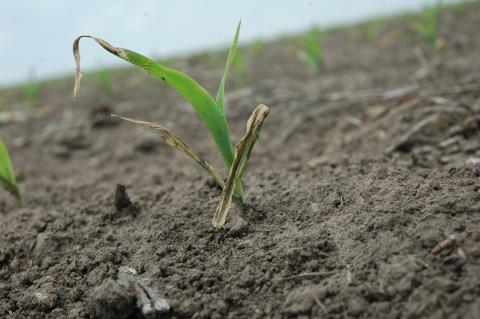2018 Corn Yield Forecasts as of July 11: Higher Temperature Led To Faster Corn Development
July 13, 2018
Corn yield forecasts and crop growth stage estimates for the US Corn Belt, based on crop modeling and local input, start up this week for 2018. Corn development is well ahead of normal, with most sites in the central and southern fringes of the Corn Belt in the silking or grain-filling stages.
2018 Corn Yield Forecasts: Approach and Interpretation of Results
June 29, 2018
Here's how the Yield Forecasting Center will be developing corn yield forecasts for 41 locations across the Corn Belt during the 2018 crop season. Modeling, using Hybrid-Maize, weather data, and on-site verification help researchers estimate yields so growers can adjust management during the season, if necessary.
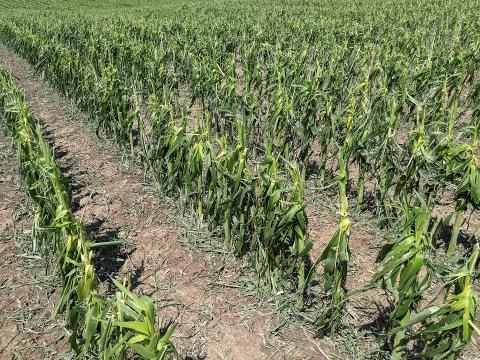
Mid-Season Hail Damage Assessments in Corn and Soybeans
June 25, 2021
When severe storms and hail hit your corn and soybean fields, it's important to estimate yield losses to determine the need for future inputs and alternative management strategies. This guide offers steps to evaluate mid-season hail damage and estimate potential yield losses.
Control of Volunteer Corn in Soybean and Corn
June 1, 2018
Volunteer corn is a competitive weed in the corn/soybean cropping system and if not controlled, may result in a yield penalty and contribute to survival of gray leaf spot and western corn rootworm. Consider these options for managing volunteer corn in soybean and corn.
Impacts of Volunteer Corn on Crop Yields
June 1, 2018
University research conducted in several Midwest states indicates the impact of volunteer corn on corn, soybean, dry bean, and sugarbeet yields.
Considerations for Postemergence Dicamba-based Herbicide Applications to Corn
May 31, 2018
With postemergence herbicide applications occurring to corn, consider these best management practices to improve results and reduce the potential for off-target injury from your dicamba application.
Take Time to Set Up Nebraska Ag Water Management Equipment
May 23, 2018
As you finish planting, consider installing ETgages and soil moisture sensors before crop roots interfere. Then join the hundreds of farmers contributing their data each week to the Nebraska Agricultural Water Management Network, a valuable tool for managing your crop.
Assessing Effects of Recent Dust Storm on Emerged Corn
May 17, 2018
This week several corn fields in south central Nebraska were surveyed to assess damage and longer term effects on stands after last week's high winds and resulting dust storms. While many plants were seriously injured, many would be expected to recover.

